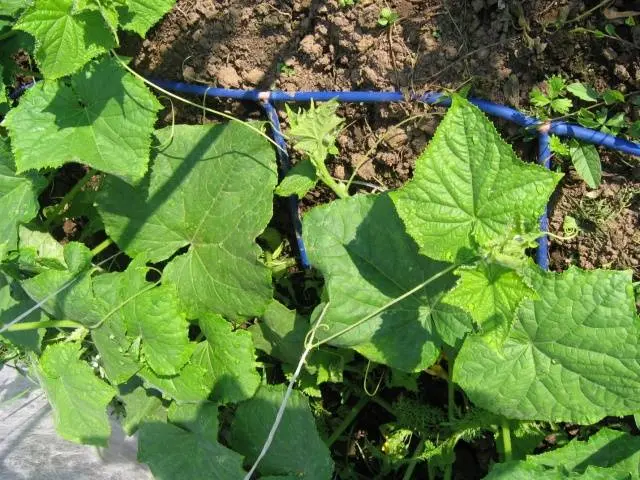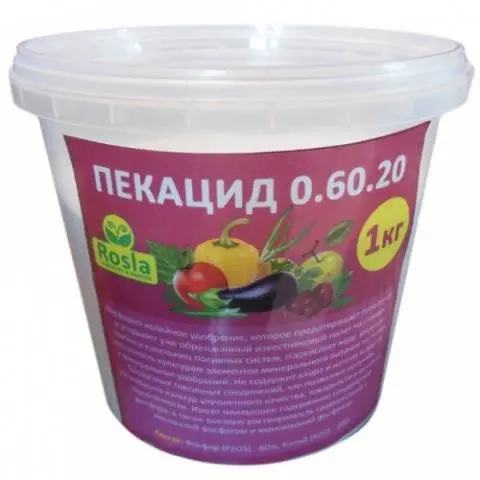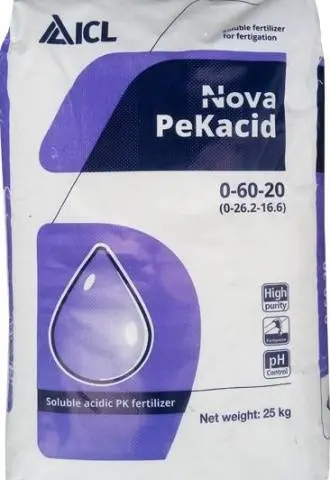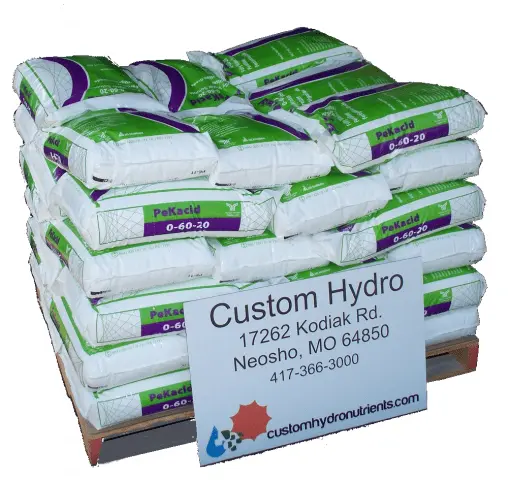Contents
When growing vegetables, you need to remember that plants use minerals from the soil. They need to be replenished next year. Among the many fertilizers, the unique Pekacid based on a compound of phosphorus and potassium has recently appeared on our market. It is used by adding to hard water during drip irrigation. The uniqueness of the fertilizer is that it brings unconditional benefits to plants and at the same time facilitates their care. The composition of Pekacid helps to cleanse the irrigation system, through which it is supplied to the gardens.
Why vegetable growers prefer Pekacid
This new phosphorus-potassium fertilizer was developed in Israel, where vegetables can only be grown with drip irrigation. Using deposits of phosphorus from the Negev desert, as well as minerals: potassium, magnesium, bromine and others, mined at the bottom of the Dead Sea, scientists have developed a unique formula for a useful complex. Pekacid was registered for domestic use in 2007.

Solving the problem of water hardness
Most water for the normal development of vegetable crops is required during flowering, ovary formation and fruit formation. Usually this is the time of mid-summer – July and early August, the hottest days. At this time, in particular, in the southern regions, the water in wells and wells becomes hard in a natural way. Water leaves sediment along the way. Hoses and accessories become clogged after a month of intensive watering.
- Plants are watered unevenly. The appearance and properties of the fruit deteriorate;
- Hard water alkalizes the soil, so the root system of plants does not absorb the mineral elements associated with salts. This worsens the properties of vegetables and causes specific diseases (ugly shape, rot);
- Phosphorus, which plants are fertilized at this time, is also not absorbed in alkaline soil;
- To cope with this problem, you have to use acids that dissolve alkalis. Working with them is unsafe for humans and the environment.
Pekacid is an exceptional solution. The fertilizer simultaneously nourishes the plants and cleans the irrigation tapes due to its composition.

Characteristics of the preparation
In appearance, Pekacid is a powder consisting of small crystals or granules of white color, odorless. Hazard class: 3.
Fertilizer composition
Formula Pekacid N0P60K20 reports that it:
- The content of only total nitrogen;
- Large percentage of phosphorus: 60% P2О5that interacts with alkalis;
- There is an indispensable potassium for crops: 20% K2A. In this form it is readily available in the soil for plants;
- No sodium and chlorine.
Features of the complex
Fertilizer quickly interacts with water. If the medium temperature is 20 0C, 670 g of the substance dissolves in a liter of water.
In Pekacid fertilizer, phosphorus is in an increased amount – 15% more than in conventional formulations.
The complex was created for fertilization through drip irrigation systems in order to reduce soil alkalization, as well as for foliar application.

- This method significantly increases the efficiency of top dressing. With it, unproductive losses of fertilizers are reduced, since plants absorb them more fully;
- Pekacid compensates for the lack of potassium and phosphorus, replaces the use of phosphoric acid;
- Pekacid is used in mixtures where fertilizers are completely dissolved in order to include calcium, magnesium and trace elements;
- The fertilizer is used for growing crops on a soilless basis, using the hydroponics method in greenhouses and open ground;
- With the help of Pekacid, any vegetables, leafy greens, root crops, flowers, fruits are grown on alkaline and neutral soils;
- The concentrated form of Pekacid dissolves in irrigation routes precipitation that originated from calcium carbonates, as well as calcium and iron phosphates;
- The pungent smell of fertilizer repels pests: aphids, mole crickets, onion flies, secretive trunks and others.
Advantages in agricultural technology
The use of Pekacid fertilizer makes the process of top dressing easy, safe and effective.
- Maintaining optimal soil and water pH levels;
- Increasing the availability of plant nutrients, including phosphorus;
- Increased mobility of nutritional components in the root system;
- Regulation of the amount of nitrogen, which is significantly lost through evaporation;
- Strengthening the filtration of water in the soil;
- Neutralization and destruction of plaque in the irrigation system, which increases the duration of its use;
- Repelling crops of harmful insects.

Application
Pekacid will have a beneficial effect on plants if the fertilizer is used for prevention purposes or at the first symptoms of a mineral deficiency.
When to Feed Your Plants
Both garden and horticultural crops signal that the time has come to take care of them by replenishing the supply of trace elements in the soil. It is only necessary to notice external changes in time.
- The lower leaves turn yellow or turn pale;
- The leaves are formed small, unless this is a sign of the variety;
- Vegetation is slowed down;
- The absence of flowers;
- Trees show damage after spring frosts.
Pekatsid fertilizer is applied at different periods of development of vegetable, fruit or ornamental crops. Plants are fed before or after flowering, before and after fruit ripening. In autumn, fertilizer is applied to the soil, removing all plant debris from the site.

How to use the tool correctly
A week or a decade after germination, the first watering is carried out, adding fertilizer to the water. Seedlings can be watered immediately after planting on the site.
Pekacid is applied, strictly following the indicated dosage, so as not to damage the plants.
- The powder is dissolved, based on the proportion: no more than 3 kilograms per 1000 m3 water, or in small doses – 1 teaspoon per 1 liter of water;
- Pekacid is used by dissolving from 500 to 1000 g in 1000 m3 water for irrigation once or twice a month;
- Another application option is possible: at 1000 m3 water consumes 2-3 kg of the drug for two or three irrigations per season;
- In one season, from 50 to 100 kg of Pekacid fertilizer are applied per hectare, depending on the phosphorus content in the soil.

What other medicines is Pekacid combined with?
The instructions for the use of the Pekacid fertilizer emphasize that the complex substance is mixed with all the necessary fertilizers in accordance with the agricultural technology of growing crops. It is combined with magnesium, potassium and ammonium sulfates, magnesium, calcium, potassium nitrates, as well as with carbamide, ammonium nitrate. We combine Pekacid not only with the usual mineral substances, but also with a relatively new type of fertilizer – chelated or organometallic forms of microelements. These complexes are most fully and easily absorbed by plants.
Approximate mixing order:
- Water is poured into the tank to two-thirds of the volume;
- Fall asleep Pekacid;
- Add calcium nitrate;
- Then, if there are recommendations, they are alternately introduced into the mixture, potassium nitrate, magnesium nitrate, ammonium nitrate;
- Add water.

Fertilizer rates for garden crops
A practical and useful preparation suitable for all plants. Crop immunity increases if they are fertilized with Pekacid.
Application table of Pekacid in the open field

Fertilizer is recommended to be used with water for irrigation, which has a pH value greater than 7,2. This is a guarantee of a good harvest and elasticity of irrigation systems.









